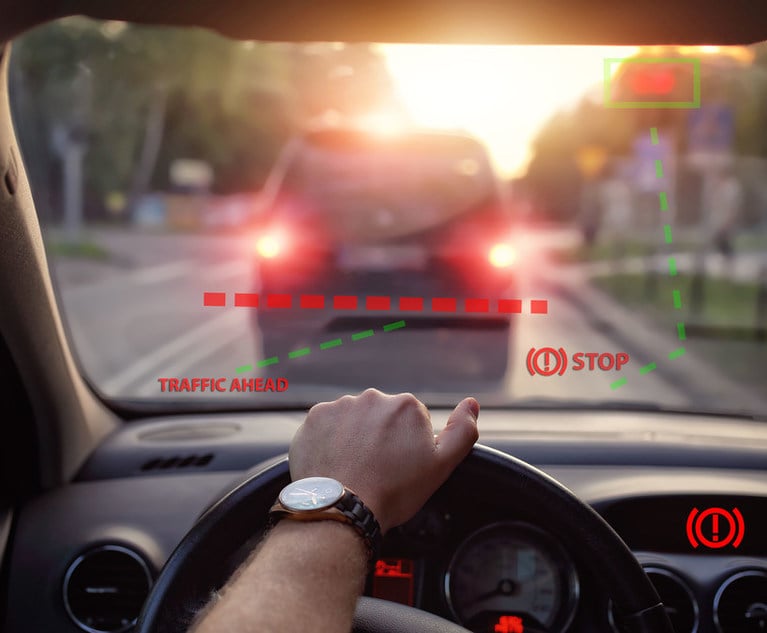Something is missing from the current discussion aroundtelematics.
|Usage-based insurance (UBI) gets a lot of well-deservedattention, discussions around how telematics can be used in claimsis growing, and the connected car vs. mobile vs. onboarddiagnostics (OBD) as the dominate/preferred data collection methodis being debated.
|But, how is any of this actually going to work? Let us waxnostalgic.
|Do you remember when a phone (even mobile) was a phone; when apersonal music player (even the first generation iPod and mp3players) just played music; and, do you remember searching theinternet using a browser? Who knew these would converge and becomeso ubiquitous that they would be in the hands of 4 year-olds in theform of a “phablet”? Or that you would buy lunch using yourthumbprint while listening to streaming internet music apps withouttaking your earbuds out! That has all happened in the last 10years.
|These examples demonstrate the power of technology platforms,enabling networks and data working together. And, this killercombination is familiar to insurance carriers — especiallythose in claims.
|Think back to late the 90s, early 2000's. Direct repair programs(DRPs) were emerging for claims, connecting auto insurers withrepairers to improve communication and help with more efficientclaims handling. The first tools to support this were effectivepoint solutions that utilized the best technology available at thetime. We know now that they weren't without limitations; insurersand repairers often had to buy multiple products, use multiplelogins to access disparate applications and endure multipleintegrations and product updates. The real limitation came with alack of true continuity — both in process and data.
|The underpinning of what ushered in claims transformation wasthe development of a unifying, cloud-based platform. CCCInformation Services Inc. (CCC) has made a substantial investmentin this technology and has helped users realize the transactionalpower, insights, and performance and operational benefits thatwould come from a single connection to the partners, technologiesand data the industry needs. It worked. Here are just two examplesof how:
- Networked information. Shared guidelines gaveauthorized parties electronic access to carrier-establishedguidelines when writing estimates. The power of automaticallysharing these carrier-established guidelines at the outset of theprocess improves communication and helps repairers create estimatesmore aligned with carrier expectations, helping support high levelsof customer satisfaction through improved cycle time.
- Intelligence-based decision-making. A networkwith critical mass generates a lot of data over 30 years. CCCleverages data to offer recommendations at first notice of loss(FNOL) to effectively route claims with a high degree of accuracy,which can shrink cycle time by two days or more.
Putting telematics into action
Telematics represents as much potential for growth as theinsurance industry has seen in decades — maybe longer.Connected car data from OEMs and insurance UBI programs are provingmeaningful to product management, actuarial and underwritinggroups; and scoring driver behavior has become prevalent, allowingcarriers to acquire additional information that may be factoredinto risk profiles. But these singular applications feel a bitlimited, considering telematics is an opportunity withenterprise-level value. A real telematics platform approach willbring cohesion, connections and continuity to driving data andprocesses, unlocking opportunities for growth, policyholderprotection in the event of an accident, and product, service andengagement opportunities throughout the policyholder continuum.
|Check out our view of auto insurance AFTERtelematics.
|What does this mean for claims?
In short, telematics can improve cycle time and transform theclaims experience to help insurers create service differentiation.That same data feeds back to support the business objectives ofmarketing, product development and underwriting. More specifically,insurers will start getting driving data feed into their existingsystems, making it immediately and effortlessly actionable. Here'show it works.
|Driving data is collected and upon impact, detailed informationabout the pre-accident driving behavior and the crash itself areinstantly run through CCC's predictive analytics engine, which ispowered by the insights gleaned from CCC and its affiliatedcompanies and includes millions of claims transactions, and morethan 20 years of injury data, and thousands of human crashtests.
|The vehicle can immediately and automatically send an alert tothe insurance carrier's FNOL representative, presenting the factsof the accident in map and dashboard formats, indicating thevehicle's location, direction of travel prior to the accident,speed, braking and steering movements, and impact severity. Thisdata can be collected from any source — mobile, embedded orconnected car.
|In addition to crash notification, FNOL representatives canreceive near-immediate insights, derived from establishedpredictive solutions, helping them determine whether the vehicle islikely to be repairable or totaled, the best appraisal option ifrepairable (using the carriers' established guidelines), if aninjury is likely, and if emergency and/or tow services should bedispatched.
|Without telematics, these steps and decisions can take days.With CCC DRIVE telematics-enabled claims solutions, they may onlytake minutes or even seconds, delivering performance and serviceimprovements, including:
- Ability for insurers to proactively engage their insured,beginning right at the accident scene.
- Reduce cycle time (and related costs) by two-to-four days.
- Reduce injury handling costs, including better management ofbuild-up in low velocity crashes, and better handling of traumaevents.
Telematics is here and embracing its full power will require acomprehensive approach that offers continuity, cohesion andcontext. The winners of tomorrow will find ways to not only improveeach functional area — marketing, underwriting and claims— but to also unite them in a way that creates a virtuouscircle of value through each.
|Greg Bannon, is vice president of Product Management atCCC Information ServicesInc. He can be reached at [email protected].
Want to continue reading?
Become a Free PropertyCasualty360 Digital Reader
Your access to unlimited PropertyCasualty360 content isn’t changing.
Once you are an ALM digital member, you’ll receive:
- All PropertyCasualty360.com news coverage, best practices, and in-depth analysis.
- Educational webcasts, resources from industry leaders, and informative newsletters.
- Other award-winning websites including BenefitsPRO.com and ThinkAdvisor.com.
Already have an account? Sign In
© 2024 ALM Global, LLC, All Rights Reserved. Request academic re-use from www.copyright.com. All other uses, submit a request to [email protected]. For more information visit Asset & Logo Licensing.








